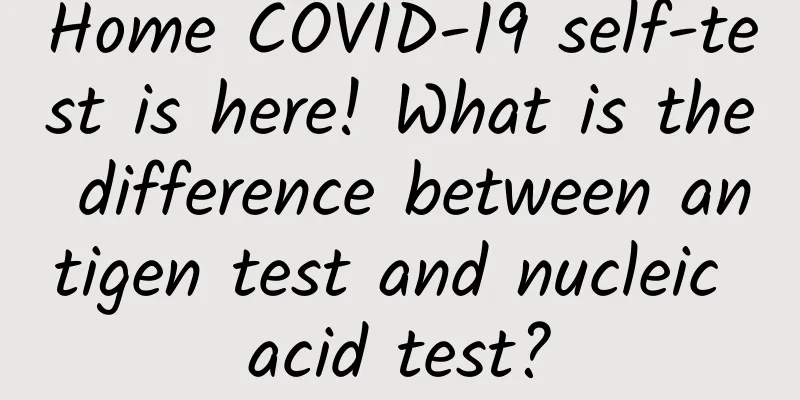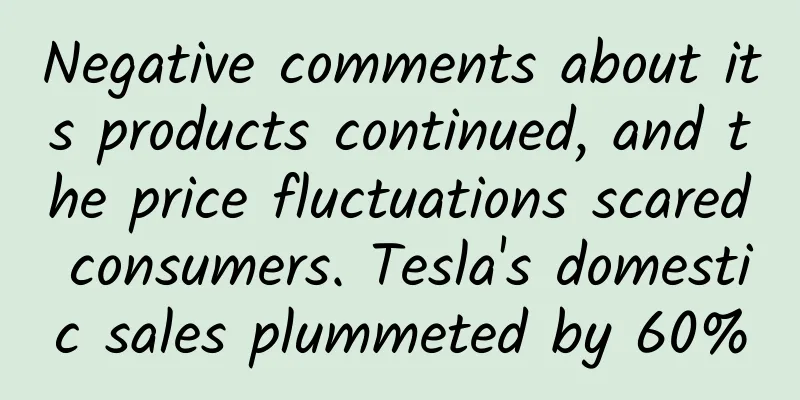Home COVID-19 self-test is here! What is the difference between antigen test and nucleic acid test?

|
According to the National Health Commission website on March 11, community residents who need self-testing can purchase antigen test reagents through retail pharmacies, online sales platforms and other channels for self-testing. If the antigen test is positive, regardless of whether there are respiratory or fever symptoms, residents should immediately report to their community (town or village). In fact, European countries, the United States, Japan, India, etc. have been vigorously promoting self-service home testing. The United Kingdom has been promoting rapid antigen testing since November 2020. After residents apply online, the test reagents will be delivered to their homes. In early 2022, each American family can make an online reservation for 4 free test kits and complete self-testing at home. However, many of the new crown self-service test kits that are selling like hot cakes overseas are "Made in China". What is the difference between the "pregnancy test stick" type of home self-test and the "cotton swab" type of nucleic acid test? What role do they play in epidemic prevention and control? This issue of NetEase Health's "Health Focus" will help you understand the truth. What are nucleic acid testing, antigen testing, and antibody testing? Currently, there are two strategies that can be used to identify COVID-19 infection: one is virus detection, which can detect both antigens (virus proteins) and nucleic acids (virus nucleic acid sequences). The other is antibody detection, which detects antibodies produced by the human body to resist the virus. This is to find "evidence" that the immune system army fights the virus after the virus invades the human body. A virus is a organism without a cell structure. It has a protein shell on the outside and genetic material - nucleic acid - inside. Nucleic acids are divided into two types: DNA and RNA, so viruses are divided into two types: DNA viruses and RNA viruses. The new coronavirus is an RNA virus. Structure diagram of the new coronavirus The nucleic acid test commonly mentioned in China is called polymerase chain reaction (PCR) detection technology, which is essentially a gene amplification technology. That is, the RNA fragment of the new coronavirus is reverse transcribed into double-stranded DNA, and then amplified by DNA polymerase to continuously amplify the gene fragment carrying the virus, and then captured by a fluorescent probe. When the concentration of the amplified virus reaches a critical value, there will be a fluorescent signal prompt, which means that the new coronavirus exists in the sample. The self-help home test used abroad is an antigen detection technology. After the new coronavirus infects the human body, its viral protein can act as an antigen to stimulate human cells to produce specific antibodies. Antigen detection uses the principle of combining viral antigens and antibodies to detect whether there are viral antigens in people's oral and nasal secretions. In addition, another common detection method is antibody testing, which mainly determines whether a person is infected with the virus and the stage of the disease by detecting specific antibodies in the human blood that can bind to the virus. Antigen testing: simple and fast operation, conducive to early screening of specific populations The first obvious advantage of antigen testing promoted and used abroad is that it is easy to operate. The antigen test kit is similar to a pregnancy test stick. The tester can use a cotton swab to take nasal samples without the help of a professional. The second is that it is fast. Nucleic acid testing usually takes 4-6 hours at the fastest, while rapid antigen testing can generally obtain results within 30 minutes. Let's take a look at the usage of a certain brand of new coronavirus antigen detection kit: 【Extraction and detection methods】 ·Open the extract and pour it into the extraction tube Insert the swab into the extraction tube and rotate it 10 times, then let it sit for one minute. ·Squeeze the swab head from the outside of the extraction tube to remove the swab Cover the dripper Place the test card horizontally and drop 3 drops of extract solution vertically into the sample hole Wait 15 minutes to see the results 【Test result explanation】 Positive: Red T and C lines appear within 15 minutes. Negative: A red C line appears within 15 minutes of sample addition, but no red T line appears. Invalid: As long as the red C line does not appear, it means that this test card is invalid. Please use another test card to test again. Antigen testing is generally used during the acute infection period, that is, sample testing within 7 days of the onset of symptoms in suspected people, to facilitate early triage and rapid management of suspected people. However, antigen testing only produces a "positive" result when the virus concentration is high, which is prone to missed detection. Nucleic acid testing: The operation is relatively complicated, but the accuracy is good and the data can be monitored The nucleic acid test used in China is more sensitive than the antigen test. Even if the virus content of the sample is very low, the result can always be obtained through order of magnitude amplification. Furthermore, nucleic acid testing has the characteristics of early diagnosis and high specificity. In theory, the result can be detected 1-2 days after infection. At present, it is still the "gold standard" for diagnosing new coronary pneumonia. Nucleic acid testing also has a particularly important advantage - data can be monitored. Although antigen testing can be done at home, whether the results are reported depends on self-consciousness, which makes it easy for results to be concealed. Nucleic acid testing is done by professional institutions, and the test data is connected to the Internet, which is very conducive to prevention and control. Of course, nucleic acid testing is indeed very labor-intensive and machine-intensive. Medical staff collect specimens, professionals conduct tests, and professional instruments conduct tests. No step can be missing. Domestic COVID-19 screening and diagnosis are mainly carried out by nucleic acid testing and supplemented by antibody testing, and antigen testing has not been carried out on a large scale. Internationally, nucleic acid testing and antigen testing are carried out simultaneously, while antibody testing is mainly used for infection tracing investigation. As a supplement to nucleic acid testing, antigen testing has important medical value. For countries with severe epidemics abroad, affected by many factors such as manpower and material resources, they chose home self-service antigen testing early. Scientists from all over the world are looking for more efficient, lower-cost and safer means of testing for the novel coronavirus. Whether self-help antigen testing at home can be fully implemented in China in the future depends on the epidemic situation and the country's overall prevention and control policies. |
<<: Why can't cities be without trees?
>>: Do not pick or eat poisonous plants on the plateau!
Recommend
“Severe cold + dark night”, how to make astronauts feel the warmth of returning home?
On December 4, 2022, the crew of Shenzhou XIV ret...
KTplay supports 2015 Global GameJam in China
The 2015 Global GameJam came to a successful conc...
How to play with short video information flow advertising creative sharing
Currently, short video information flow ads are v...
Trump bans WeChat? Many American companies express opposition
This article is reproduced from Leiphone.com. If ...
This great achievement in the history of mathematics is attributed to the Arabs?
This article briefly introduces the early develop...
Apple: Games without version numbers will be removed from the App Store in China starting August 1
Starting from July 31, Apple requires that game a...
Learn from comics: Detailed explanation of the 4 key factors for getting Apple recommendations
As the competition in the mobile game market beco...
In-depth analysis of marketing: Why has Pinduoduo gained 300 million users in just three years?
We all know that it is not easy to survive in the...
How to write a successful operation and promotion plan?
In the process of making the plan , I discovered ...
New weapon against cancer! China Spallation Neutron Source: making the microscopic world “visible”
From "a piece of paper plan" to the cre...
Link Motion issued a shareholder letter on related issues
Beijing time, September 18, 2018 – Link Mobility ...
Can Mobike’s credit score really control the random parking of shared bicycles?
Some time ago, shared bicycles were regulated in ...
Does calcium supplementation increase the risk of cardiovascular disease and kidney stones? The truth is this!
Is the TV cabinet of your elderly family also pil...
Have you been officially diagnosed as a "rat person" on the Internet? The reason may not be laziness, but low energy
Recently, a niche track has become popular on soc...
How much does it cost to customize the Zhuzhou Electrician Mini Program? What is the price of customizing Zhuzhou Electrician Mini Program?
There is no fixed price for the customization of ...









